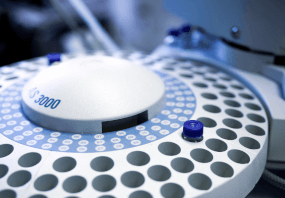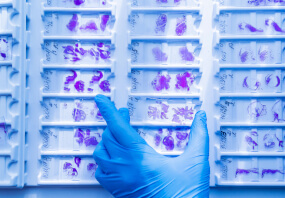General description
Substance-P receptor (UniProt P14600; also known as Neurokinin-1 receptor, NK-1 receptor, NK-1R, SPR, Tachykinin receptor 1) is encoded by the Tacr1 (also known as Nk1r, Tac1r) gene (Gene ID 24807) in rat species. NK-1, NK-2 and NK-3 are receptors that mediate the biological activities of tachykinins, including substance P (SP), neurokinin A (NKA), neurokinin B (NKB), ranakinin, kassinin, neuropeptide gamma, and eledoisin, widely distributed in the central and peripheral nervous systems. SP shows the highest affinity toward NK-1R (substance-P receptor) and exerts its biological activities via NK-1R, including addition, depression, chronic inflammation, and cancer progression. The involvement of NK-1R in acute pancreatitis through mediating neurogenic inflammation has also been reported. Upon stimulation by SP, the NK-1R interacts with multiple G proteins, including Gαs, Gαq/11, Gαi/o, Gα12, and Gα13, generating second messengers and activating downstream effector molecules. After binding NK-1R, SP induces a clathrin-dependent internalization of the receptor-ligand complex, SP is then degraded and the receptor is recycled to the cell surface. NK-1R is a 7-transmembrane (32-54, 65-86, 107-128, 149-169, 195-219, 249-270, 284-308) GPCR, having its N-terminal end (a.a. 1-31) at the extracelluar side and C-terminal end (a.a. 309-407) at the cytoplasmic side. There exist a second alternatively spliced human NK-1R isoform that lacks the C-terminal cytoplasmic domain (a.a. 312-407 missing). The full-length form enhances the growth of cancer cells and stimulates the production of cytokines, which up-regulate the truncated form. The truncated form mediates malignancy and is more abundant in colonic epithelial cells from patients with colitis-associated cancer. In cancer cells, the NK-1 receptor is mainly localized on the plasma membrane and in cytoplasm, and occasionally also in the nucleus.
Specificity
This guinea pig polyclonal antiserum targets substance P receptor C-terminal end sequence. Target region is absent in human spliced isoform 2.
Immunogen
Epitope: C-Terminus
KLH-conjugated linear peptide corresponding to the C-terminal end sequence of rat substance P receptor.
Application
Research Category
Neuroscience
Research Sub Category
Synapse & Synaptic Biology
This Guinea pig polyclonal Anti-Substance P Receptor Antibody, Cat. No. AB15810 detects levels of Substance P receptor, and has been published and validated for use in Immunohistochemistry, and Western Blotting.
Western Blotting Analysis: A 1:1,000 dilution from a representative lot detected substance P receptor in 10 µg of human brain tissue lysate.
Immunohistochemistry Analysis: A 1:500 dilution from a representative lot detected substance P receptor in rat brain tissue sections.
Quality
Evaluated by Western Blotting in rat brain tissue lysate.
Western Blotting Analysis: A 1:5000 dilution from a representative lot detected substance-P receptor in 10 µg of rat brain tissue lysate.
Target description
~58/54 kDa observed. Target band size appears larger than the calculated molecular weights of 46.25/46.32/46.37 kDa (human/mouse/rat) due to glycosylation. Uncharacterized bands may be observed in some lysate(s).
Physical form
Format: Unpurified
Guinea Pig polyclonal antibody serum with 0.05% sodium azide
Unpurified.
Storage and Stability
Stable for 1 year at -20°C from date of receipt.
Handling Recommendations: Upon receipt and prior to removing the cap, centrifuge the vial and gently mix the solution. Aliquot into microcentrifuge tubes and store at -20°C. Avoid repeated freeze/thaw cycles, which may damage IgG and affect product performance.
Analysis Note
Control
Rat brain tissue lysate
Legal Information
CHEMICON is a registered trademark of Merck KGaA, Darmstadt, Germany
Disclaimer
Unless otherwise stated in our catalog or other company documentation accompanying the product(s), our products are intended for research use only and are not to be used for any other purpose, which includes but is not limited to, unauthorized commercial uses, in vitro diagnostic uses, ex vivo or in vivo therapeutic uses or any type of consumption or application to humans or animals.
biological source: guinea pig. Quality Level: 100. antibody form: unpurified. antibody product type: primary antibodies. clone: polyclonal. species reactivity: rat, mouse, human. manufacturer/tradename: Chemicon®. . technique(s): immunohistochemistry: suitable, western blot: suitable. NCBI accession no.: NP_036799. UniProt accession no.: P14600. shipped in: wet ice. target post-translational modification: unmodified. Gene Information: human ... TACR1(6869). Storage Class Code: 12 - Non Combustible Liquids. WGK: WGK 1. Flash Point(F): Not applicable. Flash Point(C): Not applicable.Shipping Information:
Dry Ice Surcharge & Ice Pack Shipments: $40
More Information: https://cenmed.com/shipping-returns
- UPC:
- 51373435
- Condition:
- New
- Availability:
- 3-5 Days
- Weight:
- 1.00 Ounces
- HazmatClass:
- No
- MPN:
- AB15810
- Temperature Control Device:
- Yes












